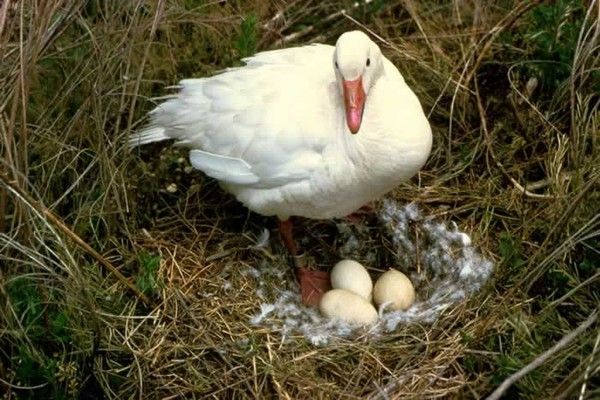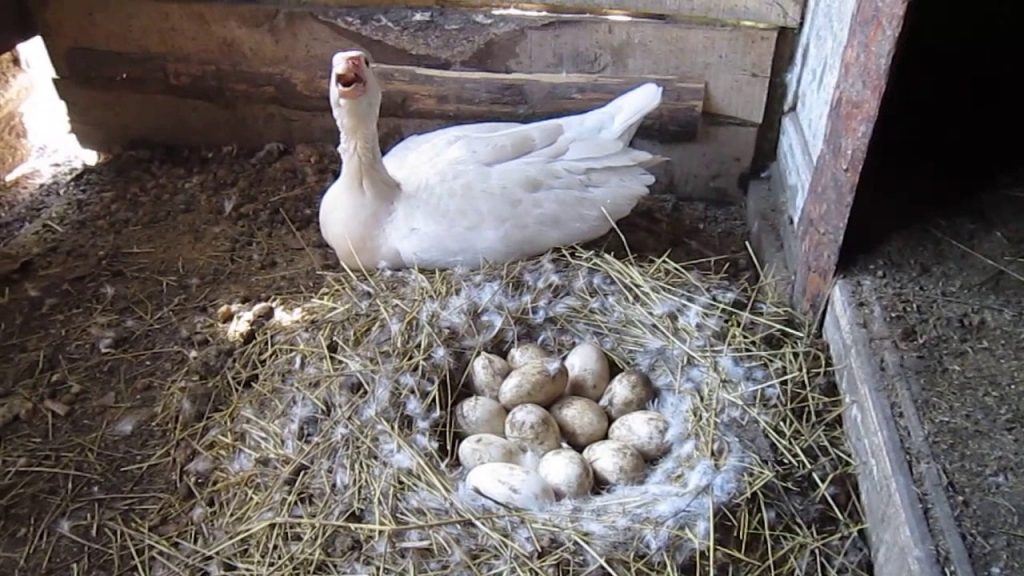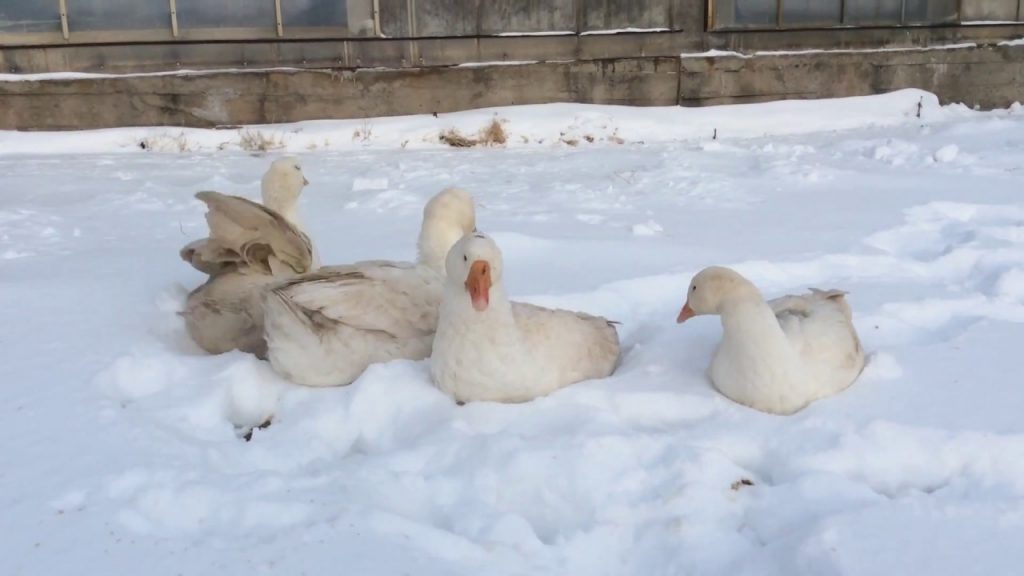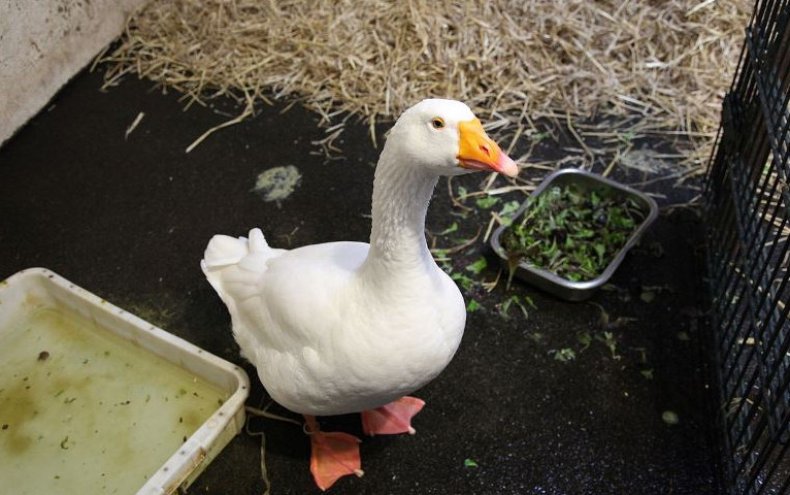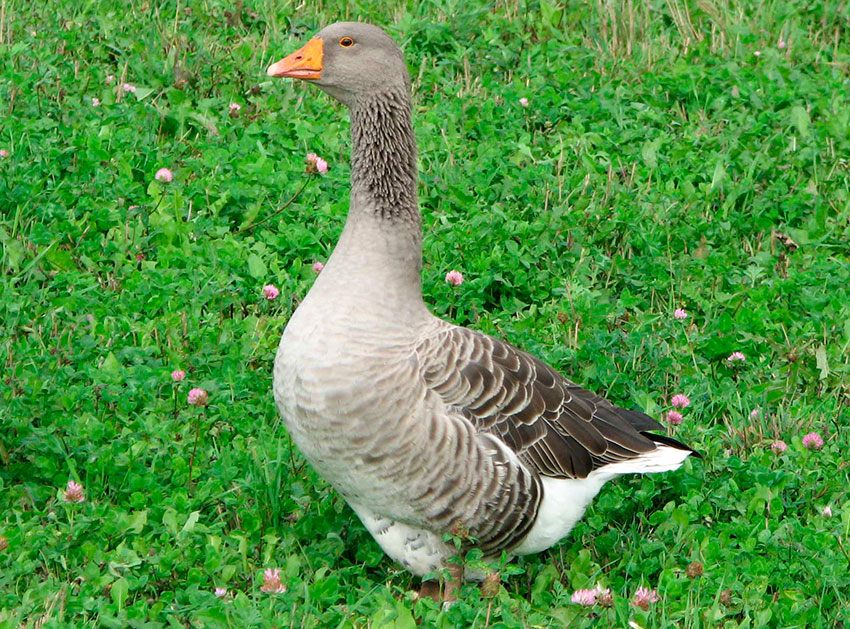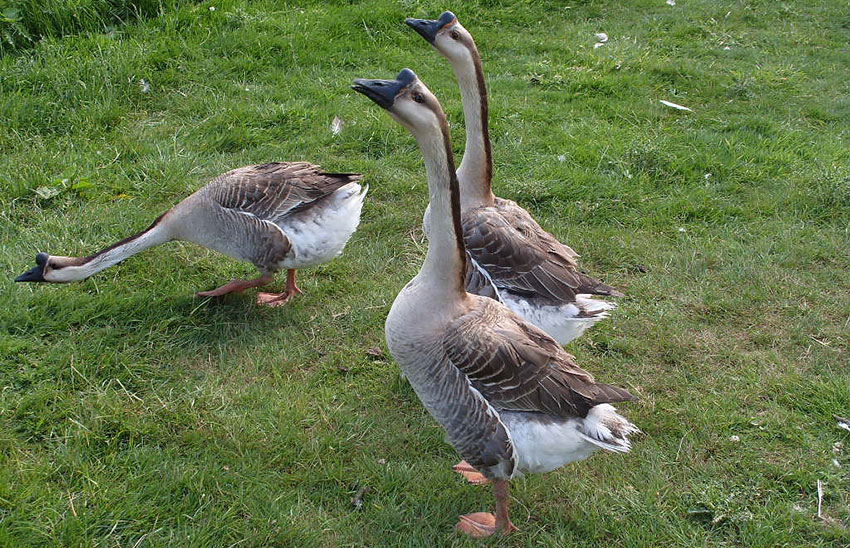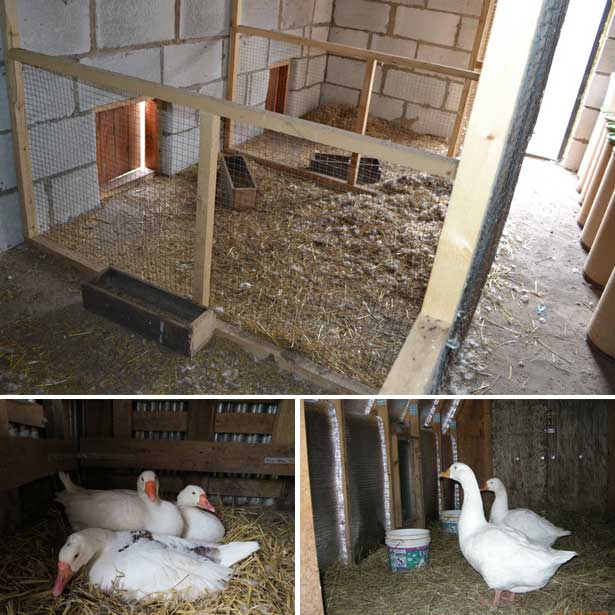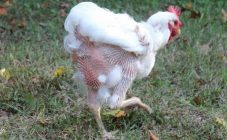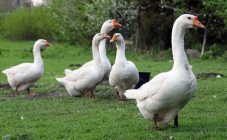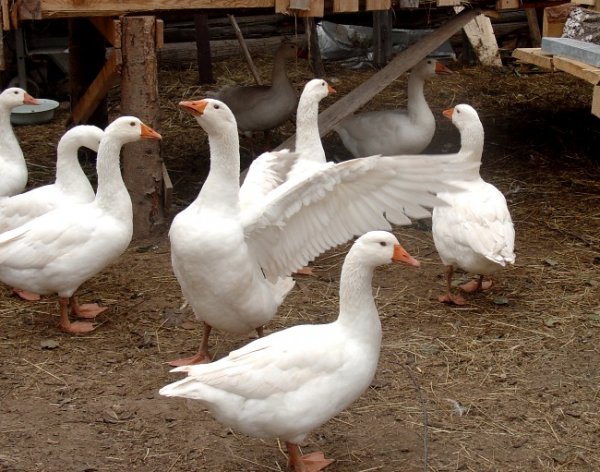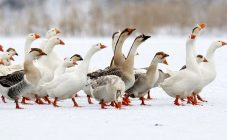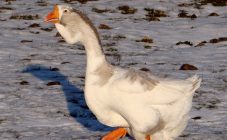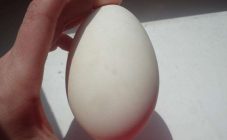Content:
The period when geese begin to lay eggs occurs in the spring, from 275-375 days of life. When comfortable conditions are created for late broods, the laying of the first egg can occur at 5-6 months of age. The duration of the egg production stage is from 3 to 5 months.
Finding out who laid the egg, an adult goose or a pullet, is quite simple. Young geese have significantly fewer eggs.
Knowing at what age geese begin to lay eggs, you need to observe their behavior. The start of egg-laying is stressful for the goose. There is a hormonal reconfiguration of the whole organism. A beginner in this business is easy to distinguish from other individuals.
Features of the behavior of birds before egg-laying:
- The birds start to build or destroy nests.
- Show concern.
- They are marking time.
- Lower the tail.
- Irregular, heavy gait.
- They twist and sit near the nests, then in the nests themselves.
- They bury themselves in the straw.
- Begin to wear stones.
Preparing for laying
A goose for this period in her life must be prepared in advance. A month before that, you need to review the diet. It is necessary to increase the amount of feed and the frequency of feeding. At this time, the weight of the goose should increase to 500 grams. But the obesity of birds should not be allowed, this can lead to a decrease in the number of eggs laid or to an unwillingness to carry them at all.
You can check the correct feeding by testing. You need to hold your hands under the wings of the geese, if tubercles of fat are found, it means that the bird is overfed and gained excess weight.
Nests (boxes, boxes) are placed in shaded corners of the house. Nests are prepared in advance: the bottom is covered with sand or covered with straw, feathers and down. It is necessary to give the geese the opportunity to choose their own place for laying eggs. One nest is enough for three geese.
Effect of light on egg production in geese
In order for the geese to rush regularly, you need to use a secret weapon. The mystery lies in the change in daylight hours. If you gradually increase the length of daylight hours in December to 14-16 hours, then the laying hen can begin to lay eggs in January.
Egg-laying in winter
As a rule, geese stop laying in June. After molting, in the cold season, geese will not enter. But they can be artificially provoked. Under proper conditions, winter egg production will not be inferior in terms of indicators to the warm season. When laying in winter, you need to carefully collect the eggs, otherwise they may freeze. In winter, the bird hides its eggs even in the snow.
Achieving maximum productivity
The geese reveal their full potential at the age of 2-3.
To increase the productivity of birds, the following techniques are used:
- Increased daylight hours.When the summer is over, the birds need to be kept for a month on a shortened 7 hour daylight hours, then again transferred to 15 hours. Thus, the clutch awakens in the autumn-winter period.
- Providing artificial heating of the poultry house in the winter. It is necessary to maintain the temperature at 20-25 degrees.
- Warm litter. Additional flooring made of straw or sawdust is laid on the floor, otherwise the birds will freeze their paws, this will adversely affect their reproductive abilities.
- A qualitative change in the diet. Increase the number of feedings and add more vegetables to the diet. You also need to add salt (2 grams per individual) and vitamins to the feed. A good feeding is a special compound feed. Dried nettles are useful in the winter menu.
- Organization of comfortable walking. When it is not very cold and calm outside, you need to provide short-term walking of birds. The day before, the walking area is covered with straw or wood waste (shavings, sawdust).
Geese laying eggs
When geese begin to rush, a certain cyclicality is observed. They rush in 2-3 passes. They will demolish the party, then stop. They will rest for a month, and after that they begin to rush again. When the goose egg-laying period ends, the hatching time begins. If the female is not allowed to the nest, then after 30 days she will begin the next laying cycle.
These birds have a long life. Their egg production increases with age. By the age of three, domestic geese increase the number of laid eggs by 10-20%, which will become larger with each new year of life.
If the purpose of breeding geese is to obtain high volumes of egg products, then you need to know how many eggs can be laid by females of different breeds, and choose an egg-laying breed for breeding.
List of the best egg-bearing breeds
Large gray
Unpretentious geese in care. 40-45 eggs are brought in a year. Weight of 1 egg - 170-180 gr.
Gorkovskaya
They carry 40-65 eggs, weighing 120-140 grams.
Lindovskaya
Lay up to 50 eggs at 140-160 gr. A significant percentage of egg fertilization.
Chinese
Not to be confused with the Peking duck breed. The main purpose of breeding this breed is to obtain eggs. Brings 60-95 pieces per year, weighing 130-140 grams.
Kuban
The breed is the result of crossing the Chinese and Gorky representatives of the species. The goose weakly sits on eggs, she is a bad brood hen. But very prolific. During the year, it can lay 80-90 eggs, 150 gr. Everyone.
Geese do not rush every day. Eggs in the nests usually appear once every two days.
To hatch chicks, the eggs must be fertilized by a gander. Without the mating process, the female will be able to lay eggs, but the goslings will not hatch from them.
Why did the geese stop rushing
A common cause of this is the wrong diet. Geese do not want to rush both when they are undernourished and when they overeat.
The temperature in the goose house should not be lower than + 150C. Hypothermia affects not only the ability to lay eggs, but also the diseases of the livestock.
Reducing the length of daylight hours is another important reason for this phenomenon. Insufficient or intermittent light is bad for birds.
Experienced Farmer Tips
- The first eggs should be laid in the nest. Then the goose, even with free content, will inevitably return to the nest to lay an egg.
- If the female intends to get in touch, and the doors to the poultry house are closed, then she will still stand in silence or walk nearby screaming loudly.
- As a rule, geese scurry at the same time in the morning.
- An egg that is laid on the third day after mating should be considered fertilized.
- A dummy testicle can provoke birds to drift.
- It is undesirable to keep geese together with terrestrial species of birds, such as chickens, turkeys and Indo-cows.
- With a poor diet, geese can lay eggs without shells.
